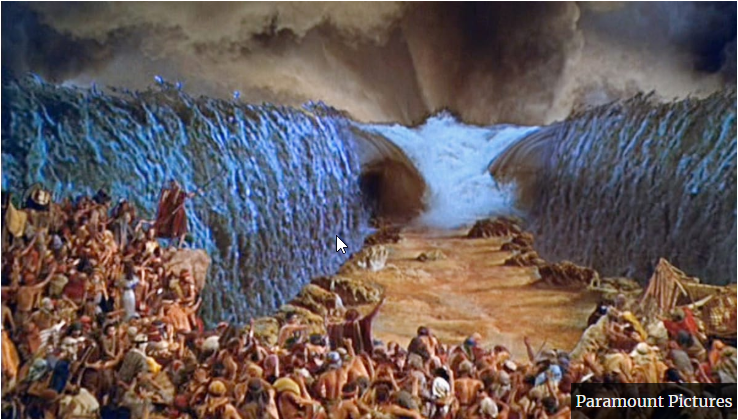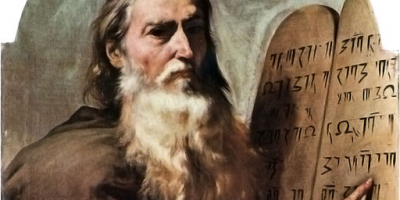
Book of Exodus
The following are summaries and outlines for the Book of Exodus.

Book of Exodus Summary
Exodus means exit, departure or a going out. It gives a record of the exodus of the Israelites from Egypt which signified the end of a period of oppression for Abraham’s offsprings and the commencement of the fulfillment of the covenant promised to Abraham. It records the tremendous numerical growth of Jacob’s family in Egypt which grew into a vast nation, filling the land of Goshen.

Title
The word “Exodus” is derived from the Greek Exodos, the name given to the book by those who translated the Septuagint (the pre-Christian Greek translation of the OT). “Exodus” means “exit,” “departure” (see Lk 9:31; Heb 11:22).
The name was retained by the Latin Vulgate, by the Jewish author Philo

Author and Date of Writing
Traditionally, Jewish and Christian scholars have agreed that Moses compiled and wrote Exodus, along with the other books of the Pentateuch (Genesis through Deuteronomy). It was written by Moses about 1450-1410 B.C. Thus Exodus was not intended to exist separately but was thought of as a continuation of a narrative that began in Genesis and was completed in Leviticus, Numbers and Deuteronomy.
Source: https://www.thelastdialogue.org/book-of-exodus-summary/
Source: NIV Study Bible Notes – NIV Study Bible, Copyright © 1985, 1995, 2002, 2008, 2011 by Zondervan.
Source: NKJV Study Bible – Copyright ©1997, 2007 by Thomas Nelson, Inc.
Image Source: https://www.rainbowtoken.com/isrealites-leave-egypt-bible-story.html
Image Source: creation.com/genesis-gospel
Image Source: Image by Gerd Altmann from Pixabay
Exodus Outline
I. Prologue (chs. 1–2)
A. Israel Blessed and Oppressed (ch. 1)
- Israeli population multiplies (Exodus 1:1–7)
- The Oppression Under the Pharaohs (Exodus 1:8–22)
B. A Deliverer Prepared (ch. 2)
- Infant Moses spared (Exodus 2:1–10)
- Mature Moses’ escape from Egypt (Exodus 2:11–25)
II. God’s Deliverance of Israel (chs. 3–18)
A. Moses and the Burning Bush (Exodus 3:1-22)
B. Moses’ Objections and Disqualifications Overcome (3:11–4:17)
- Signs for Moses, Exodus 4:1-17
C. Moses Returns to Egypt (4:18–31)
D. Unsuccessful Attempts to Deliver (5:1–6:12)
E. Family Record of Moses and Aaron(6:13–27)
F. Judgment of Plagues on Egypt (6:28–11:10)
- Aaron to Speak for Moses (6:28–7:7)
- Presenting the signs of divine authority (7:8–13)
- First plague: water turned to blood (7:14–24)
- Second plague: frogs (7:25–8:15)
- Third plague: gnats (8:16–19)
- Fourth plague: flies (8:20–32)
- Fifth plague: against livestock (9:1–7)
- Sixth plague: boils (9:8–12)
- Seventh plague: hail (9:13–35)
- Eighth plague: locusts (10:1–20)
- Ninth plague: darkness (10:21–29)
- Tenth plague announced: death of the firstborn (ch. 11)
G. The Passover (12:1–28)
H. The Exodus from Egypt (12:29–51)
- Passover Restrictions (Exodus 13:43-50)
I. The Consecration of the Firstborn (13:1–16)
J. Crossing the “Red Sea” (13:17–15:21)
- Deliverance at the “Red Sea” (13:17–14:31)
- Song at the sea (15:1–21)
K. Journey to Sinai (15:22–18:27)
III. Covenant at Sinai (chs. 19–24)
A. The Covenant Proposed (ch. 19)
- Moses meet God at Mt. Sinai (Exodus 19: 1-13)
- Moses prepares the Israelites to meet God (Exodus 19: 14-25)
B. The Ten Commandments (20:1–17)
- Ten Commandments (Exodus 20: 1-17)
C. The Reaction of the People to God’s Fiery Presence (20:18–21)
- People’s reaction (Exodus 20: 18-21)
D. The Book of the Covenant (20:22–23:33)
E. Ratification of the Covenant (ch. 24)
- The Covenant Confirmed (Exodus 24: 1-18)
IV. God’s Royal Tent in Israel (chs. 25–40)
A. Instructions concerning the Royal Tent (chs. 25–31)
- Collection of the materials (25:1–9)
- Furnishings of the tent (25:10–40)
- The tent and its courtyard (26:1–27:19)
- The tent’s personnel (27:20–29:46)
- Priesthood (27:20–28:5)
- Garments of the priests (28:6–43)
- Ordination of the priests (ch. 29)
- Remaining provisions concerning the tent (ch. 30)
- Appointment of skilled workers (31:1–11)
- Observance of Sabbath rest (31:12–18)
B. Rebellion Threatens Withdrawal of God (chs. 32–34)
C. God’s Royal Tent Set Up (chs. 35–40)
- Summons to build (35:1–19)
- Voluntary gifts (35:20–29)
- Bezalel and his skilled workers (35:30–36:7)
- Progress of the work (36:8–39:31)
- Moses’ blessing (39:32–43)
- Erection of God’s royal tent (40:1–33)
- Dedication of God’s royal tent (40:34–38)
Outline adapted from: NIV Study Bible Notes – NIV Study Bible, Copyright © 1985, 1995, 2002, 2008, 2011 by Zondervan.